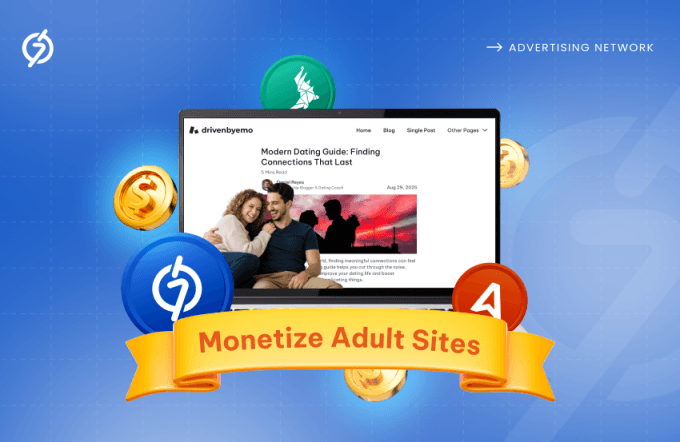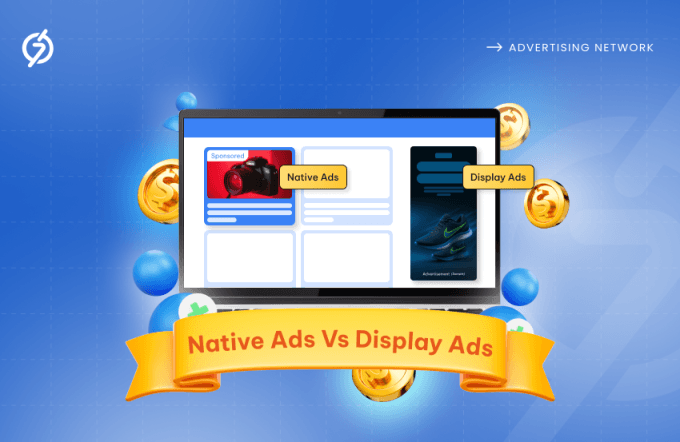Placing ads in the white space of a website is one of the most popular content monetization strategies publishers use to monetize web traffic. However, for digital publishers, it becomes chaotic to select display ad formats that are both effective and non-intrusive, while also allowing them to turn passive income into a consistent revenue stream.
Thus, to help publishers choose the right ad format, we’ve listed the most popular and effective display ad formats for website monetization in 2026. We’ve also listed the strategies that will help to maximize the reach and engagement of your ad inventories. Don’t forget to check them out!
Boost Your Ad Revenue with Smart Display Formats
Best Display Ad Formats for Digital Publishers in 2026
There are several types of display advertising formats, like banner ads, native ads, interstitial ads, etc, that publishers, ranging from small to large-scale, can use to generate an online income. These are:
Banner Ads

For decades, the most popular digital advertising format has been banner ads. This top-paying ad format is often displayed in a rectangular shape, featuring text and visually alluring graphics to capture audience attention and drive higher CTRs.
Some of the top-performing banner ad formats for increasing publisher revenue in 2026 are:
| Banner Ad Sizes | Banner Ad Formats |
| 250*250 | Square |
| 468*60 | Main Banner |
| 300×250 | Medium Rectangle |
| 336×280 | Large Rectangle |
| 728×90 | Leaderboard |
| 970×250 | Billboard |
| 300×600 | Half Page / Large Skyscraper |
| 320×100 | Large Mobile Banner |
| 160×600 | Wide Skyscraper |
Select digital banner ad sizes that complement the design and layout of your website and grab your audience’s attention the moment they land.
Best For: General Websites, Blogs, Forums
Ideal Device / Platform: Desktop & Mobile
Also Read: Banner Ads: What They Are and How They Work In 2025
Interstitial Ads

Interstitial ads occupy the entire screen during a content transition, capturing users’ full attention, driving more clicks, and helping publishers to easily monetize via display ads. This format is commonly used in gaming, news, entertainment, and travel websites.
The interstitial display ad format offers a higher CTR; however, excessive use of ads can disrupt users’ experience, leading to frustration. Thus, placing ads strategically is mandatory, not an option, to maintain users’ trust and engagement with the content.
Best For: Gaming, News, Entertainment, and Travel Websites
Ideal Device / Platform: Mobile Apps & Web
Also Read: How to Make Money by Posting Ads?
Native Ads
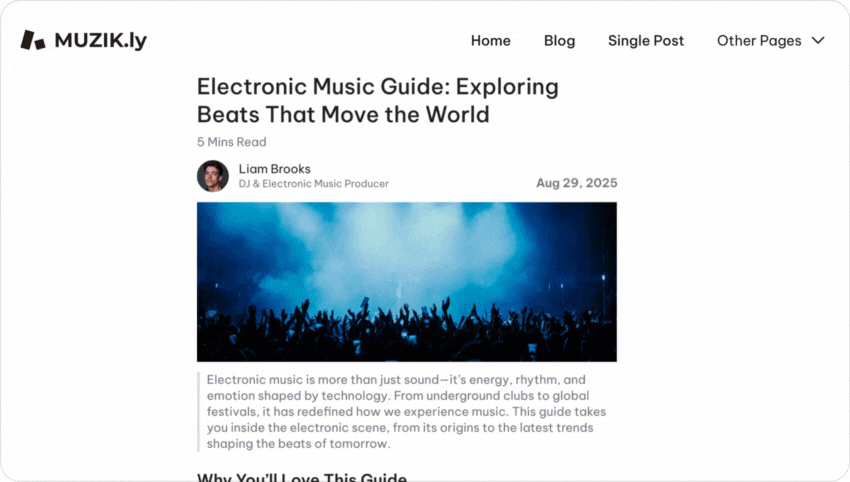
Native ads blend seamlessly with the website’s look and feel, making them less intrusive compared to other display ad formats. It’s often used in social media “feeds”, news portal “sponsored listings”, and “blogs’ recommended ‘read more’ sections.”
Native ad formats appear more organic and less promotional, resulting in higher engagement and conversion rates that help publishers achieve their long-term revenue objectives.
Best For: Blogs, News Portals, Social Media Feeds
Ideal Device / Platform: Mobile & Desktop
Also Read: 10 Best Native Ad Platforms for Publishers in 2025
Video Ads
Brands use video ad formats to promote their offerings and name through engaging storytelling, graphics, and pleasant music. This helps them to gain more visibility, grab users’ attention, and increase their revenue.
In contrast, publishers place video ads because they instantly grab attention and help them acquire more impressions and clicks through their ad inventory.
Types of video ads:
In-stream videos. Appearing within the video, i.e., pre-roll, mid-roll, or post-roll. This display ad format is particularly popular on YouTube, Instagram, Facebook, and online streaming platforms such as Netflix and Spotify.

Outstream videos. This ad format is placed within the paragraphs or in-feed. Mostly popular on social networking sites and websites that constantly publish content.
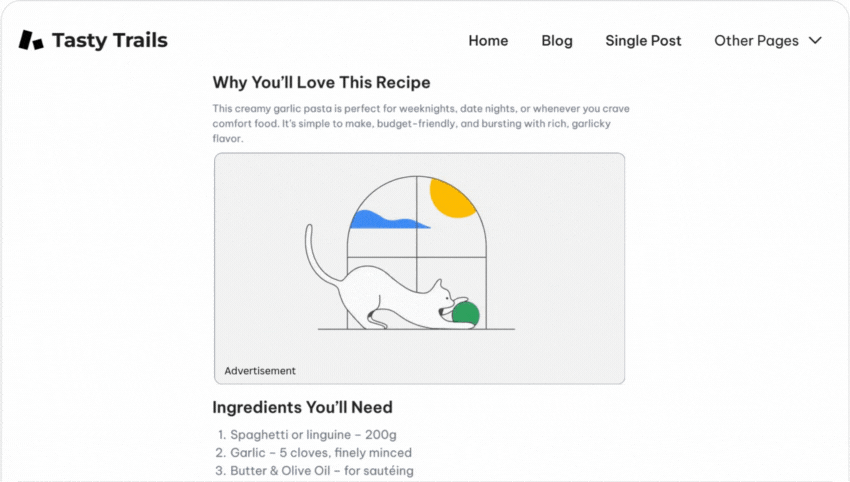
Best For: YouTube, Social Media, and OTT Platforms
Ideal Device / Platform: Mobile, Desktop, Smart TVs
Rich Media Ads
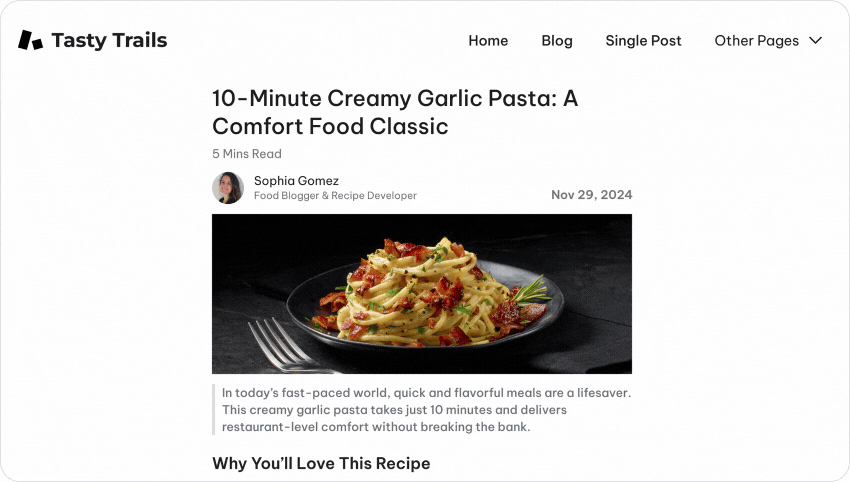
Rich media ads incorporate interactive elements, including captivating images, animation, and music, that encourage users to take actions such as swiping or clicking.
Rich media display ad formats, such as expandable banners, interactive videos, and carousels, tend to outperform traditional banner ads.
Best For: Dynamic Sites and Content-Rich Pages
Ideal Device / Platform: All Devices
One of the must-have rich media ad formats is carousel ads.
Carousel ads are the online advertising format used on social networking sites, such as Facebook, Instagram, and LinkedIn, featuring images or videos in a single ad that can be swiped through.
These ads blend naturally within the users’ feed, boosting engagement, going viral, and helping advertisers and publishers achieve their goals.
Best For: Facebook, Instagram, LinkedIn
Ideal Device / Platform: Mobile Apps & Social Media
Sticky Ads

Sticky ads, as the name suggests, are stuck “positioned” at a specific place on a web page, often at the top, bottom, or sidebar, to remain visible to users and keep attracting their attention even on scrolling. Sticky ads are one of the most essential display ad formats for publishers in 2026.
Best For: News, Blogs, and eCommerce Websites
Ideal Device / Platform: Desktop & Mobile
Rewarded Ads

Rewarded ads are more commonly used in mobile apps and gaming websites, where users are rewarded with exclusive offers, extra lives, digital currencies, and premium content in exchange for watching the entire ad content.
This display ad format works exceptionally well for both advertisers and publishers. Advertisers can raise awareness about their brand and offerings, while publishers make money with display ads without disrupting users’ current activity. Moreover, users find such ads more rewarding and satisfying because they offer several perks.
Best For: Gaming and App-based Environments
Ideal Device / Platform: Mobile Apps
Interactive Ads
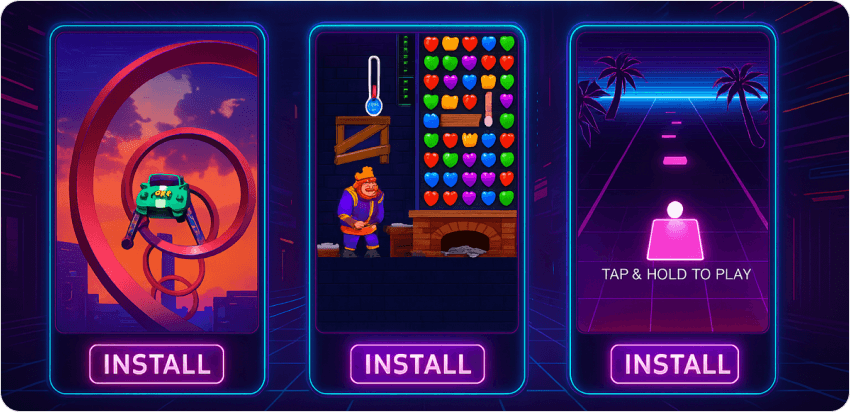
Interactive ad formats encourage real-time interaction with users through quizzes, polls, AR, and games, boosting engagement and generating more revenue. It’s one of the top-paying ad formats for publishers because users find them interactive and non-intrusive, unlike other display ad formats.
Best For: Social Platforms and Immersive Content
Ideal Device / Platform: Mobile & Web
Popunder Ads

Monetize via pop-under display ads. This display ad format appears behind the main window, allowing users to continue performing their on-page activity, unlike pop-up ads that can be intrusive in nature. These ads, however, are non-intrusive, as they appear only when the user closes the main window.
This display ad format for content delivery and acquiring engagement outperforms for both advertisers and publishers, helping them achieve their end goals.
Best For: Download or Streaming Sites
Ideal Device / Platform: Desktop
In-page Push Ads

In-page push ads resemble the push notifications that appear on mobile devices. Publishers place these ads because they immediately grab attention the moment they appear on the screen, and don’t require permission from end users, making them more than just an alert message but an essential display ad format.
Best For: Blogs, eCommerce, and News Sites
Ideal Device / Platform: Mobile & Desktop
Also Read: Most Profitable Blogging Niches for Publishers in 2025
A Quick Recap:
- Top Paying Ad Formats: Video, Interactive, Banner, Interstitial, Sticky
- Most Engaging Ad Formats: Carousel, In-page Push, Video, Interactive, Rewarded, Sticky
- Non-invasive Ad Formats: Native Ads, Sticky Ads, Skyscraper Ads
- Mobile-friendly Ad Format: Banner, Video, Native, Carousel
These are the essential display ad formats for publishers. Now, based on your website design, audience demographics, and content type, select your display ad formats and place them strategically to capture users’ attention and generate sustainable passive income from your online presence.
Best Practices to Maximize Ad Revenue
After selecting the display ad format of your choice, incorporate the following practices to maximize ad revenue. These tips will help you strategically place ads without hurting the audience’s onsite experience and your online credibility.
- Use the white space on your web page that doesn’t disrupt users’ experience —such as the first fold, bottom, sidebar, and in-content areas —to maximize your page space and keep ads visible to users, thereby increasing conversion rates.
Read: Ad Placement Strategies That Actually Work in 2025
- Create mobile-optimized pages. It’s essential to ensure a good page speed to make ads load quickly and prevent them from buffering, as online users expect responses within seconds. If your site fails to deliver this, they will likely turn to a website that does. Therefore, try to maintain the page’s UI to capture and retain the attention of mobile users.
- Leverage responsive ad units, as these ad units automatically adjust to provide a consistent appearance across all devices and maintain a positive user experience.
- Analyze user behavior with tools like Google Analytics and Hotjar. This helps digital publishers track and monitor web ad placements that generate the most clicks and impressions while understanding traffic behavior to optimize ad placements accordingly.
Additionally, perform A/B testing by incorporating two different ad formats on a web page to analyze which one generates more clicks and impressions, ultimately driving more revenue. - Understand your audience demographics. Each audience has a different intent that needs to be fulfilled; therefore, it’s essential to use ad formats that resonate most with your audience.
Advice: Create a balanced ad monetization strategy that includes every fine detail, such as the audience demographics, niche, ad format, ad placement, ad network, and expected ad revenue. Also, avoid adding too many display ads, as they can increase your spam score.
All these points will help you refine your ad monetization strategy and generate more ad revenue from your ad slots.
How to Monetize via Display Ads?
Use an ad network to sell ad inventory and monetize site traffic without the hassle of connecting and negotiating with advertisers personally. [An ad network works as an intermediary between advertisers and publishers, allowing them to buy and sell ad spaces based on their selected requirements.]
Recommended Ad Network for Publishers
Use the 7SearchPPC self-serve display ad platform to manage and track your digital ad spaces effectively. The platform is well-known for its simple, clean user interface and robust features and perks for digital publishers. Some of them are:
- Protects sensitive data
- Provides multiple payment options
- Ensures full transparency and control
- Provides clean and safe ad codes
- Supports a diverse range of websites
- Provides intuitive ad formats
- Offers high ad fill rates
- 24/7 customer support
- No technical skill is required to place ad codes
Don’t just take our word for it; explore the case study to discover why 7SearchPPC is the ideal platform for monetizing website traffic.
Why pitch, connect, and negotiate with different advertisers? When you can use the 7SearchPPC ad network to have a hassle-free monetization experience!
Start Earning!
Choosing the Right Ad Formats for Maximum Impact
Understanding different types of display ad formats is essential, as it helps select the right ad formats based on your website design and layout, as well as audience behavior and interests, to achieve the best results.
Moreover, choosing the right display ad platforms for content delivery ensures your ads appear seamlessly across all devices, maintaining user engagement and revenue. Take your time and don’t pick a display ad platform randomly.
Frequently Asked Questions
How can publishers monetize via display ads?
Ans. Digital publishers sell ad inventories either by directly connecting advertisers or using an ad monetization platform to make money with display ads.
What are the top ad networks for publishers and advertisers?
Ans. 7SearchPPC, Google Adsense, Richads, and RevContent are some of the top display ad platforms for publishers and advertisers.
How can I choose the right ad network for my website?
Ans. Select the ideal ad network for content monetization by using the following key points.
- Check for a 24/7 customer support facility
- Supports your selected niche
- Offers a range of ad formats with high ad fill rates
- Allow tracking and monitoring functionality
- Provides timely payouts
- Advance security to protect sensitive data
- Grants full control and transparency
Which display ad formats have the highest CTR?
Ans. The display ad formats that offer the highest CTR are pop-under, banner, interstitial, video, skyscraper, large rectangle, and responsive ads.
What are the standard display ad formats that are IAB-approved?
Ans. Some IAB-approved standard display ad formats are rich media, video ads, leaderboard, skyscraper, large rectangle, full banner, and square pop-ups.
Interstitial ads vs banner ads: what’s better?
Ans. Interstitial ads are more commonly used on gaming websites because they occupy the entire screen, capturing users’ full attention and resulting in higher CTRs. Meanwhile, banner ads are less intrusive, easier to implement on a website, and generate moderate revenue.
Publishers should strive to use a combination of display ad formats, tailored to their goals, niche, and audience interests, to create a balanced ad monetization strategy that helps generate online revenue.













![Proven Blog Traffic Tips To Grow Your Audience In 2025 [A Beginner-Friendly Guide] 24 Blog Traffic Tips](https://www.7searchppc.com/blog/wp-content/uploads/2025/10/Blog-Traffic-Tips-680x442.png)
